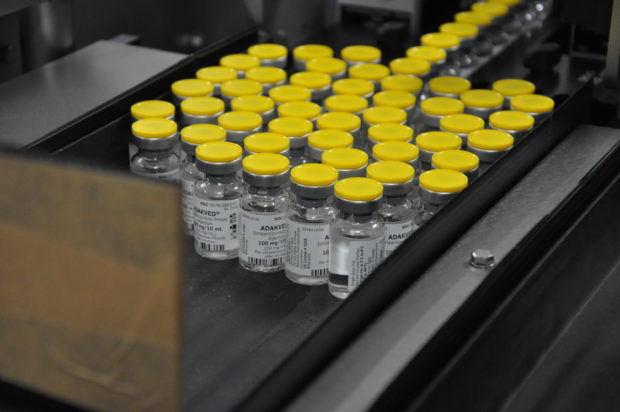FDA: New Drug to Manage Sickle Cell Disease
U.S. regulators on Friday approved a new medicine that can help reduce extremely painful sickle cell disease flare-ups.
The Food and Drug Administration approved Novartis AG’s Adakveo for patients 16 and older. The monthly infusion, which halves occurrences of sickle cell pain episodes, will carry a list price of roughly $85,000 to $113,000 per year, depending on dosing. Insured patients generally will pay less.
Today the FDA approved the first targeted therapy to treat patients with a painful complication of sickle cell disease called vaso-occlusive crisis https://t.co/LmlJA32cZa pic.twitter.com/uSfKXE0haC
— Media Affairs (@FDAMedia) November 15, 2019
Sickle cell disease is one of the most common inherited blood disorders, affecting about 100,000 Americans, most of them black, and about 300 million people worldwide.
Its hallmark is periodic episodes in which red blood cells stick together, blocking blood from reaching organs and small blood vessels. That causes intense pain and cumulative organ damage that shortens the lives of people with the disease.
“The duration and severity of these pain crises worsen with aging. Often patients die during one of these crises,” said Dr. Biree Andemariam, chief medical officer of the Sickle Cell Disease Association of America.
Andemariam, a former Novartis advisory board member, said the drug appears to work better the longer patients receive it.

This undated image provided by Novartis shows bottles of Novartis’s Adakveo. U.S. regulators have approved the new sickle cell disease medicine that can prevent extremely painful, dangerous “crises” in which misshapen blood cells clump together, reducing blood and oxygen flow. (Novartis via AP)
The Swiss drugmaker is continuing patient testing to determine whether Adakveo, also known as crizanlizumab, lengthens patients’ lives, said Ameet Mallik, the company’s head of U.S. oncology and blood disorders.
He said severe pain episodes send U.S. patients to emergency departments about 200,000 times per year. About 85% are hospitalized for days to a week, running up big bills.
The debilitating condition also causes anemia, delayed growth, vision damage and painful swelling in hands and feet, making it hard for some people to maintain jobs or attend school.
Current treatments include a 21-year-old cancer drug called hydroxyurea and Endari, approved in 2017.
Inpatient studies, Endari reduced the frequency of pain episodes about 25% and hydroxyurea reduced them by half. Hydroxyurea can have serious side effects and requires weekly blood tests. Both drugs have complicated dosing and don’t work — or stop working — in some patients.
This is huge! NEW SICKLE CELL DISEASE THERAPY!https://t.co/jRfpY4HfdH pic.twitter.com/tJu2ugXKit
— Sickle Cell 101 (@sicklecell101) November 15, 2019
In a one-year study of 198 patients, those getting the higher of two Adakveo doses averaged 1.6 pain episodes over that year and 36% had none.
A comparison group on placebo averaged three pain episodes that year and 17% had none. Adakveo’s side effects included influenza and high fever.
Danielle Jamison, of Islandton, South Carolina, has suffered from sickle cell pain episodes since shortly after birth. The 35-year-old previously had a half-dozen pain crises requiring hospital trips each year.
Those lessened by about half when she began taking hydroxyurea nine years ago.
She hasn’t been in the hospital since she started taking crizanlizumab two years ago as part of a patient study. She still has mild daily pain, but she said she can now take care of her home and drive her 9-year-old daughter to activities.
Trending Articles
“It’s made a huge difference in how much I’m able to do,” Jamison said.
All three drugs work through different mechanisms, so doctors may switch patients to Adakveo or to add it to their current treatment, said Andemariam, head of the University of Connecticut’s sickle cell treatment and research program.
Meanwhile, numerous drugs to treat sickle cell disease and gene therapies to possibly cure it are being tested.
Inquirer.net will receive a commission on purchases made*

